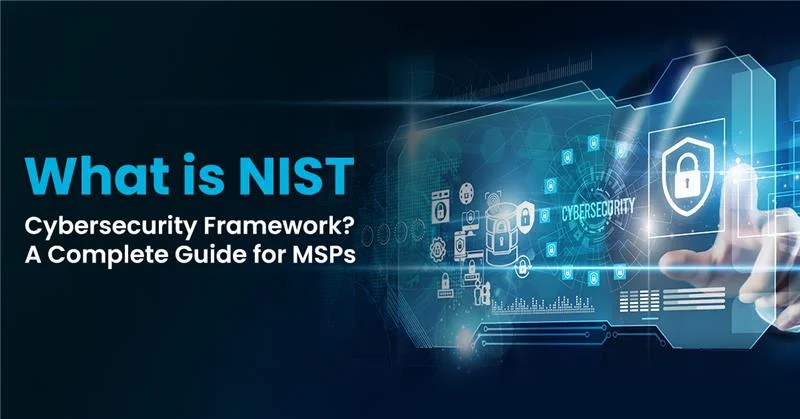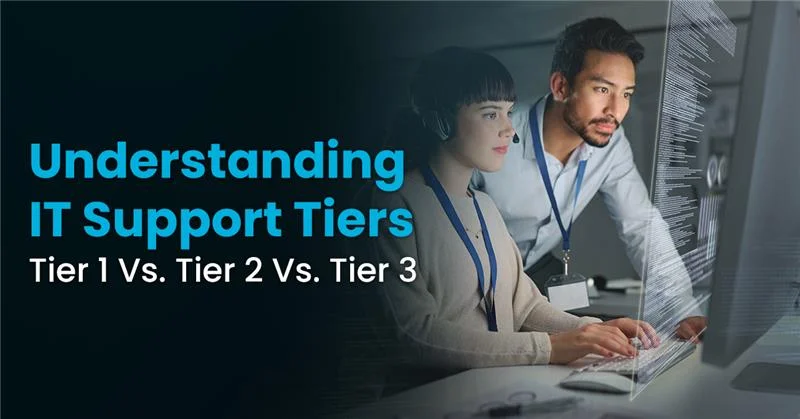When we talk about SOC compliance, most people only hear “compliance” and their eyes glaze over. But if you’re running an MSP, the difference between SOC 1 and SOC 2 is not just about passing an audit. It’s about changing how your teams actually work.
I’ll explain it with some real-life stories we’ve seen happen inside MSPs. These are not theory, they’re the messy, practical things that engineers and managers had to fix when chasing SOC 2 readiness. With the average cost of a data breach reaching $4.88 million in 2024 and SOC 2 compliance costs ranging between $30,000-$150,000, understanding SOC compliance isn’t optional. It’s business critical.
What is SOC compliance? Understanding the basics
SOC compliance forms the backbone of modern service organization security. It’s not just about ticking boxes; it’s about proving your organization can handle sensitive data responsibly.
What does SOC 1 stand for and its purpose
What does SOC 1 stand for? Service Organization Control 1 focuses specifically on financial reporting controls. SOC 1 reports help organizations demonstrate that their internal controls over financial reporting meet SSAE 18 standards. When your clients need assurance that your services won’t mess up their financial statements, SOC 1 provides that peace of mind.
Here’s the thing about SOC 1 vs. SOC 2: SOC 1 auditors care about processes that affect financial accuracy. Did your payroll system calculate numbers correctly? Can you prove transaction integrity? That’s SOC 1 territory.
SOC 2 meaning and operational controls
SOC 2 meaning centers on operational security rather than financial accuracy. SOC 2 evaluates your organization against five Trust Services Criteria:
- Security – Protection against unauthorized access
- Availability – System operational availability as agreed
- Processing Integrity – Complete, valid, accurate processing
- Confidentiality – Information designated as confidential remains so
- Privacy – Personal information collection, use, retention meets commitments
SOC 2 auditors dig deep into how you actually protect client data, not just how you count money.
SOC reporting meaning in the MSP context
SOC reporting meaning extends beyond compliance badges. For MSPs, SOC reports become competitive weapons. When enterprise clients evaluate potential partners, they often require current SOC reports. 98% of organizations have relationships with third parties that experienced breaches, making SOC compliance a trust differentiator.
SOC 1 vs. SOC 2: Key differences that impact your business
The SOC 1 vs. SOC 2 distinction isn’t academic; it changes how your team operates daily.
Financial Controls vs. Security Controls
SOC 1 compliance focuses on controls that impact financial statement accuracy. Your billing system, revenue recognition processes, and financial data handling get scrutinized. SOC 2 compliance examines operational security controls protecting customer data and system availability.
SOC I vs. SOC II explained with real case study
One MSP I know had this issue: everyone on the infrastructure team had broad admin rights. It wasn’t bad intention, just years of “let’s give access so things don’t break during outages.” For SOC 1, this wasn’t a problem because you could still reconcile who did what financially. But when they went for SOC 2? Big red flag.
So, they rolled out RBAC (role-based access control) properly. Backup guys had “Backup Ops” rights, patch guys had “Patch Ops.” If you needed more power, you had to request “Just in Time” elevated access, which auto expired. It was painful at first (a few engineers grumbled they couldn’t just “jump in and fix”). But now, every access is logged, reviewed, and traceable. It cut down insider risk massively.
This story illustrates why SOC 1 vs. SOC 2 requirements differ so dramatically. SOC compliance isn’t just about documentation; it transforms operational culture.
Compliance Scope and Audit Requirements
SOC reports require different auditor qualifications. SOC 1 auditors need financial background, while SOC 2 auditors require security expertise. The SOC 1 vs. SOC 2 timeline also differs significantly; SOC 1 can complete faster since financial controls are more standardized than security implementations.
Understanding SOC Type I vs. SOC Type II Reports
SOC reports come in two flavors, and the difference matters enormously for your SOC compliance strategy.
What is SOC Type I Compliance?
SOC Type I provides point-in-time assessment of control design. Auditors examine whether your controls exist and are designed appropriately, but they don’t test operational effectiveness over time. Think of it as checking if you have the right security cameras installed, but not whether they record anything useful.
SOC Type I costs less and completes faster—typically 3-6 months. Many organizations start with Type I to identify gaps before pursuing full SOC compliance.
Why SOC Type II compliance matters more for MSPs
SOC Type II tests control effectiveness over time, typically 6-12 months. Auditors don’t just verify controls exist; they test whether controls work under normal operating conditions.
Here’s where things get real. Another MSP servicing EU clients had engineers logging in from random countries at odd hours. Totally normal before; people traveled, worked remote, etc. But SOC 2 auditors asked: “How do you prove no one outside EU can touch EU client data?”
Ouch.
They ended up deploying geo-fencing. If you’re supposed to work on EU servers, you must be in EU-approved locations. If someone tried to log in from, say, India at 2 AM, either the login got blocked or the system demanded an extra MFA step + manager approval. It was clunky the first week, with a few “hey why can’t I log in from my hotel WiFi?” complaints. But in the end, they could prove data never left its designated geography; and clients loved that.
Another case study to prove the SOC II compliance importance for MSPs
One global MSP had a funny incident; an engineer’s account logged in from New York and then 15 minutes later, from Singapore. Clearly impossible. Under SOC 1, nobody would’ve noticed because financial audits didn’t check login anomalies. But SOC 2 required monitoring of such risks.
The MSP federated all logins into one SSO platform with adaptive authentication. Now, if someone logs in from two far-apart places in a short time, it gets auto-blocked. They also enforced MFA everywhere and tied all logs into their SIEM. Result: cleaner, faster incident response. The “impossible travel” problem disappeared overnight.
This demonstrates how SOC compliance drives practical security improvements beyond checkbox compliance.
Who needs SOC compliance and when
SOC compliance isn’t universal—but for service organizations, it’s increasingly essential.
Service organizations requiring SOC reports
MSPs, cloud providers, SaaS companies, and any organization processing client data often need SOC reports. Enterprise clients frequently mandate SOC compliance in contracts. When you’re competing for large deals, current SOC reports become table stakes.
SOC 2 certification process timeline
SOC compliance timelines vary based on current control maturity:
- Gap assessment: 2-4 weeks
- Control implementation: 3-9 months
- Type I audit: 4-8 weeks
- Operational period: 3-12 months (Type II only)
- Type II audit: 6-10 weeks
Most MSPs need 12-18 months from start to SOC 2 Type II completion.
SOC compliance implementation challenges and solutions
SOC compliance implementation hits predictable roadblocks. Here’s how successful MSPs navigate them.
Common SOC 2 Compliance Cost Factors
SOC 2 compliance costs average $30,000 to $150,000 including:
- External auditor fees: $15,000 to $75,000
- Internal resource allocation: $10,000 to $50,000
- Technology investments: $5,000 to $25,000
- Ongoing maintenance: $10,000 to $30,000 annually
Higher complexity organizations face steeper costs, but non-compliant organizations face average breach costs of $5.05 million. This makes SOC compliance a smart investment.
How organizations maintain SOC compliance
SOC compliance isn’t “set and forget.” Successful organizations implement:
- Continuous monitoring systems that automatically collect evidence
- Regular internal assessments quarterly or semi-annually
- Employee training programs covering security awareness
- Documentation management systems maintaining current procedures
Multi-location SOC compliance considerations
Global MSPs face unique challenges. SOC reports can cover all locations or specific sites, depending on scope definition. Most choose comprehensive coverage for simplicity, but jurisdictional requirements sometimes mandate location-specific approaches.
The key is defining scope clearly upfront. Changing scope mid-audit creates delays and additional costs.
Transform your MSP with IT By Design’s SOC compliance services
Navigating SOC compliance alone feels overwhelming; and it should. The stakes are high, the requirements complex, and the operational changes significant. That’s where IT By Design’s comprehensive SOC compliance services make the difference.
We’ve guided hundreds of MSPs through successful SOC compliance implementations. Our experts understand both the technical requirements and the practical realities of running an MSP. We don’t just help you pass audits; we help you build sustainable security practices that strengthen your business.
Our SOC compliance services include gap assessments, control implementation guidance, documentation development and ongoing compliance support. We transform the compliance burden into competitive advantage.
Don’t let SOC compliance become your competitive disadvantage.
Schedule a call with us to know more about our SOC Compliance, practical implementation strategies, real-world case studies, and actionable frameworks you can implement immediately.
(FAQs) Frequently asked questions
Q: What is the difference between SOC 1 and SOC 2 compliance?
A: SOC 1 focuses on financial reporting controls, while SOC 2 addresses security and operational controls that matter more for MSPs serving clients.
Q: How long does it take to get SOC 2 compliance?
A: Typically 12-18 months from start to SOC 2 Type II completion, depending on current control maturity and organizational complexity.
Q: Who can perform SOC 2 compliance audits?
A: Only licensed CPAs with specific SOC audit experience and AICPA credentials can conduct official SOC 2 examinations.
Q: What is the importance of SOC 2 certification for MSPs?
A: SOC 2 demonstrates operational security controls, builds client trust, meets enterprise requirements, and provides competitive differentiation in the marketplace.
Q: What is typical SOC 2 compliance costs?
A: Costs range from $30,000-$150,000 including auditor fees, internal resources, technology investments, and ongoing maintenance requirements.
Q: Is SOC 2 compliance universal across company locations?
A: SOC 2 can be organization-wide or location-specific depending on scope definition, but most MSPs choose comprehensive coverage for consistency.
Q: How can organizations maintain SOC compliance after certification?
A: Through continuous monitoring, regular internal assessments, employee training, automated controls, and proper documentation management systems.
Q: Why is SOC 2 Type II more valuable than Type I?
A: Type II proves controls work effectively over time (3-12 months), while Type I only confirms controls exist at a specific point in time.








